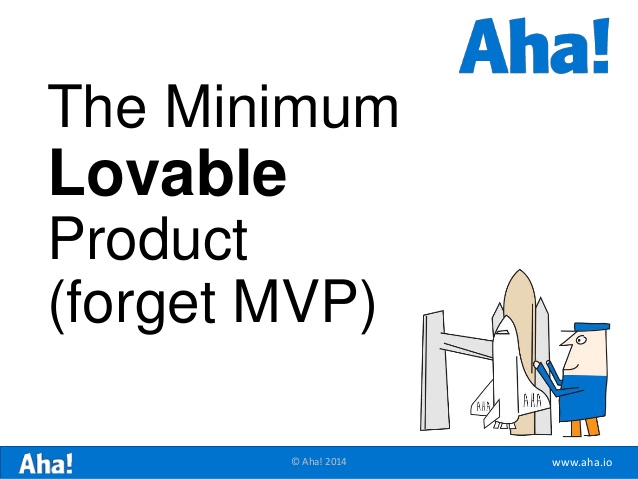I used to think bootstrapping was unsustainable, then a client in the cloud changed my mind.
I used to treat bootstrapping as a joke, likening startups that “bootstrap growth” to new restaurants that keep talking about their first Zagat listing while still having only plastic displays of food in the kitchen. Then I took on sales-and-marketing startup Agile CRM as a content strategy client. Being a part of cloud-based app’s core team since before Agile CRM’s public beta launch has completely changed my opinion on bootstrapping, and not just because we passed the sacred seven-figure revenue mark last year.
I used to see investors and VC firms as market soothsayers, as if they somehow understood business better than the businesses themselves. Now I know that bootstrapping builds better SaaS apps. Here’s why.
Pitching Customers Instead of Investors
With a bootstrapped SaaS app, you pitch your customers instead of investors. And guess what? You pitch them every day. That daily engagement and interchange that enable bolder innovation, from the app to the marketplace and back again.
When I first started working with the Agile team, we were our own best customer, if only because we were the only customer. The core development team had designed the first version of the app to solve immediate, real-world problems faced by their first SaaS app, ClickDesk, when it started scaling at an unprecedented rate. They couldn’t find a single affordable, extensible, integrated option for sales and marketing automation to track lead behavior and engage contacts throughout the entire customer lifecycle. Fed up with overpriced software that seemed to be aimed only at enterprise users with unlimited budgets, they decided to build a solution themselves and voila, Agile was born. It was just an internal solution at first, but that would soon change.
In my opinion, the most innovative part of founder Manohar Chapalamadugu’s million-dollar vision in leading Agile CRM (and this was there from the very beginning) has been his emphasis on building an all-in-one solution focused on sales and marketing processes, rather than just standalone features. It’s a bold vision, encompassing everything from call automation and online scheduling to sales gamification and automated email nurturing. With the decision to bootstrap growth from the beginning, input about these processes has continued to come directly from customers.
Something special happens when you daily pitch customers and listen closely to their response. Agile now has almost 1,300 ideas posted by customers on UserVoice, with over 200 of those ideas completed or in progress. If the CRM had taken outside investment, I think it’s unlikely that features such as the in-app landing page builder with integrated lead magnets would have been able to evolve naturally on top of an already extensive feature set. There would have been too many constraints.
An Ongoing Conversation
Technically-skilled support staff are one of the core reasons that bootstrapped SaaS companies create better products in the long run. Many of Agile’s customer testimonials speak of real campaigns and successes, and those quotes come not from anonymous review websites but from actual conversations with team members in India.
A brief word of advice. Whether you call them customer success agents, sales support staff, customer happiness rockstars, or a new title we haven’t even heard yet, let me emphasize two things: 1) They need to understand customer wants and needs (ie. it’s better to have one technically-skilled success agent than three with limited knowledge or experience of the actual product and industry); and 2) They should be some of your first hires. Just because you’re bootstrapping, that doesn’t mean you should skimp on support. In fact, the opposite is true.
I’ve been continually impressed by the dedication and responsiveness of Agile’s sales and support staff to customer wants and needs, and as I’ve learned more about bootstrapped companies with exceedingly high customer satisfaction ratings, I’ve noticed that this dedication to customer success goes hand-in-hand with smart bootstrapping. Aha!, the (totally bootstrapped) visual roadmapping app for product managers, stands out in particular with their decision to forego salespeople in favor of customer success.

Failure is the Ultimate Motivation
Bootstrapping a SaaS app isn’t about the choice between having weekly investor calls (or shareholder meetings) or weekly calls with your early adopters. It’s bigger than that. As Ryan Shank of (totally bootstrapped) mHelpDesk has written, bootstrapping is about building “an empire…one customer at a time.” We’ve already discussed the importance of customers. Now let’s shift focus to that idea of building “an empire.” The problem with empires is that eventually most of them fail.
Once a SaaS company decides to bootstrap their own growth, there’s a shift in perception regarding their own product. Maybe this is true for other types of apps, too, but with software-as-a-service I’ve noticed that the shift is much more dramatic, maybe because the rate of micro-focused iteration is so high, as are the possibilities for large-scale changes, both on the front and back ends of your product. It’s terrifying, but it’s also exhilarating. Updates happen automatically and customers are instantly engaged with them.
Bootstrapped SaaS apps can create more dynamic products because (if they’re successful) they embrace the possibility of failure, using it as motivation for streamlining their product and constantly making small enhancements, too, such as cleaning up front-end code and improving speed in as many ways as possible, like for one particular feature in one particular mobile browser. As Shank notes, having a smaller amount of cash on hand also demands a certain discipline and focus. How will you use that money? Will you build an app customers love, or will you create another pitch deck for investors?